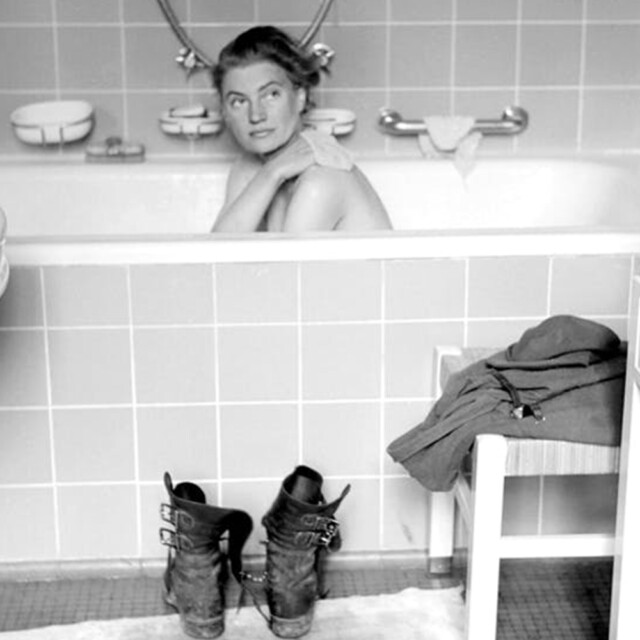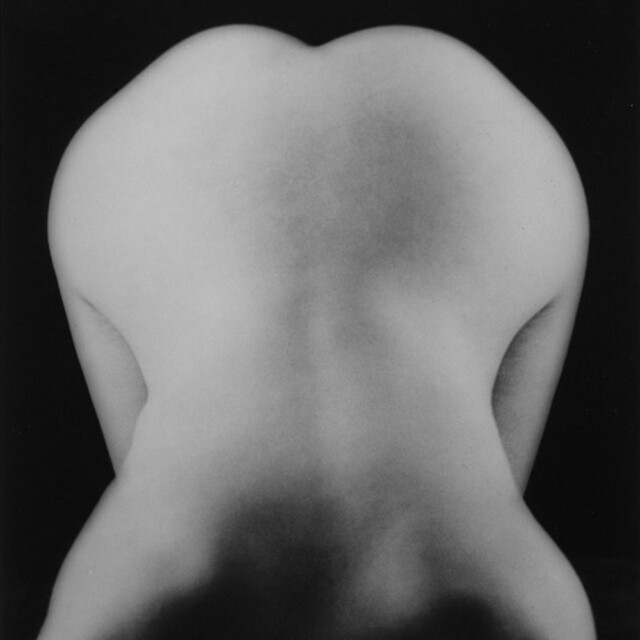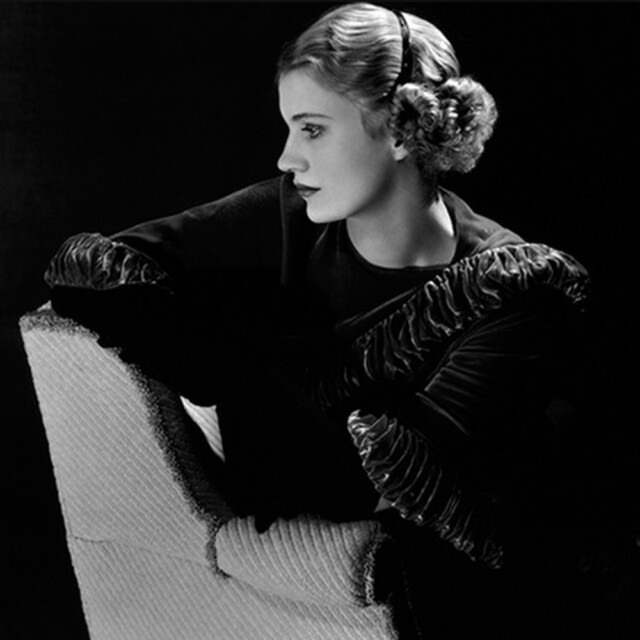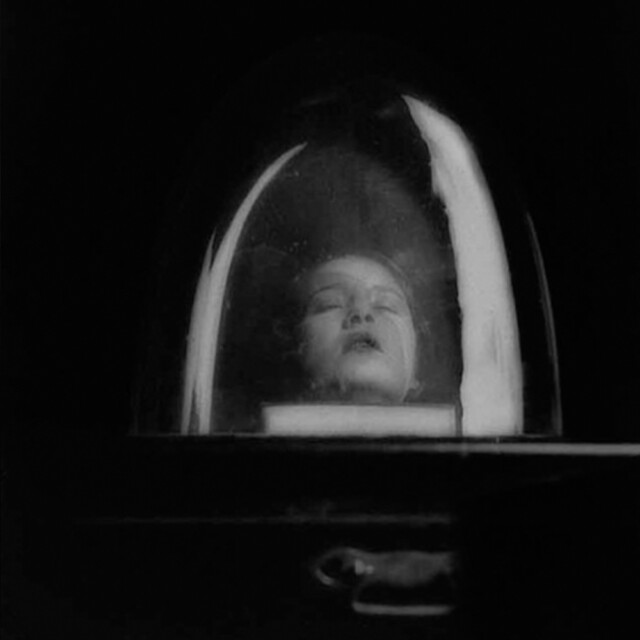In 1930, Jean Cocteau convinced her to star in his avant-garde film Le sang d’un poète. Covered in plaster and wrapped in a long, draped garment Elizabeth Lee Miller interprets a statue inspired by classical models. She appears as a modern goddess, with a white complexion and graceful features.

Lee Miller poses as a statue in Jean Cocteaus film Le sang d’un poète, 1930.
Elizabeth Lee Miller’s extraordinary career as an artist (photographer, model and photojournalist) began when she started posing for magazines, where she appeared from a very young age. Her beauty was soon recognize by Condé Nast, launching her on the cover of Vogue when she was 19 years old; and in 1927 Georges Lepape traced her features for the cover of Vogue America. In a very short time her face became a constant presence on the covers of women’s magazines. Originally from Poughkeepsie, this young woman was soon posing for photographers such as Edward Steichen and Arnold Genthe, and became one of the most sought after models of the time. Not more than two years later, following a scandal which arose concerning a photograph of her posing for Kotex [1], advertising women’s sanitary napkins, Lee Miller left for Paris and decided to take up photography – moving to the other side of the camera lens.
Her life was, without a shadow of a doubt, a rather eventful one, full of twists and turns and marked by painful events [2]. She approached photography at an early age and thanks to her father she learnt the process of developing film in a darkroom; her very first camera was the Kodak Brownie her father, Theodore Miller, used for his amateur photographs.
She moved to Paris in 1929 and met Man Ray, coming in close contact with surrealism and many artists who were part of the movement. Her lens captured many famous figures of the time: Pablo Picasso, Max Ernst, Jean Cocteau, Joan Mirò, Paul Éluard are just come of the friends Miller caught on camera. She became studio collaborator to Man Ray as well as his muse and lover; she was the one who helped him develop the solarization technique and she posed for numerous photographs. The eye of L’Objet à détruire created (for the second time, the first copy dates back to 1922-23) by Man Ray in 1933 is precisely that of his beloved Lee Miller; the two ended their relationship in 1932 and with this work the surrealist artist seemed to want to destroy the memory of it.
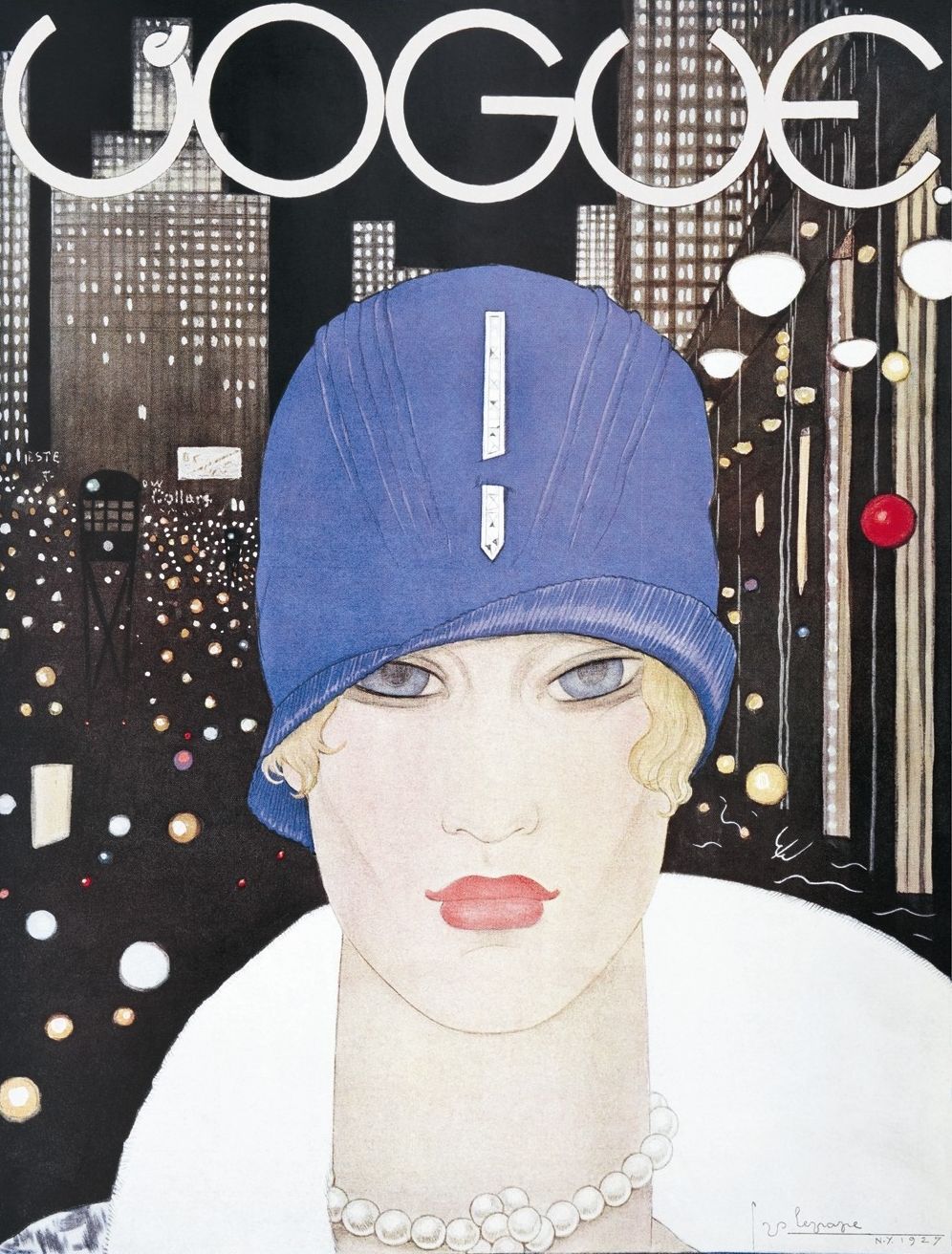
Georges Lepape, Lee Miller in an illustration for the cover of Vogue US, March 1927 – Condé Nast Publications.
“Cut out the eye from a photograph of one who has been loved but is seen no more. Attach the eye to the pendulum of a metronome and regulate the weight to suit the tempo desired. Keep doing to the limit of endurance. With a hammer well-aimed, try to destroy the whole at a single blow” |Man Ray on This Quarter (vol.I, September 1932, p.55)
Once back in New York, Lee Miller dedicated herself to portraits, to surrealist photography and shots for Vogue magazine, working from a studio she opened in collaboration with her younger brother Erik. Self-Portrait in Headband (1933) dates back to this period: a self-portrait, created for Vogue, in which Lee Miller is both photographer and model at the same time – similar shots were taken by Horst of Coco Chanel a few years later.

Man Ray, Objet à détruire, first copy 1923; second copy 1933 (1965 ed.) © Tate Gallery
Miller spent some time in Egypt with her first husband Aziz Eloui Bey whom she met in 1934, and in 1937, on a visit to Paris, she met Roland Penrose, a surrealist artist whom she married a few years later and with whom she had a son, Anthony Penrose. During that time, the two artists went on many visits to Europe, and it is during this period that Picasso painted Miller six times using his cubist method.
The most extraordinary phase of Miller’s career took place during WWII. Shortly before the outbreak of this vast conflict, Miller settled in London and became war correspondent for Vogue. She was one of the (only) two women photojournalists active on the war front – working for the US Army. In 1944 she collaborated with Time and Life magazines, working alongside David E. Scherman they continued to document the atrocities of war, the battles and the liberation of concentration camps by Allied forces. The photographs taken in Duchau and Buchenwald are historical documents in which the suffering of prisoners and the atrocities committed by the Nazis are forever immortalized.
©Lee Miller Archives, England.
Among her most iconic, and least exhibited, photographs is her self-portrait in Hitler’s bathtub – shot taken with the help of Scherman. Miller immortalizes herself as she washes off the dust from Duchau, with her mud-stained boots on the bathroom floor; as she says in Vogue, “I took some pictures of the place [Hitler’s residence] and I also got a good night’s sleep in Hitler’s bed. I even washed the dirt of Duchau in his tub.” After the war, Miller continued her career as a photographer, despite suffering from post-traumatic stress for many years to come. In the early 1950s she published her last work for Vogue entitled Working Guests (July 1953).
Miller died in 1977, leaving her son a legacy of about 60,000 negatives, 20,000 prints and proofs, documents and writing, all meticulously boxed and stored in the Farley Farm House attic.
Note: [1] It was 1929, Miller was the first model to “put her face” on an advertisement for women's sanitary products. The photograph, taken by Steichen and purchased without her knowledge by the Kotex brand, caused considerable media scandal.
[2] When the Miller was just 7 years old, she was sexually abused by a family friend. And after her experience as a war correspondent, she suffered from post-traumatic stress disorder.
Watch the full movie here.
Useful information:
Read other Curiosities of ZìrArtmag
Follow us on: Facebook and Instagram
Translated by Ludovica Sarti
